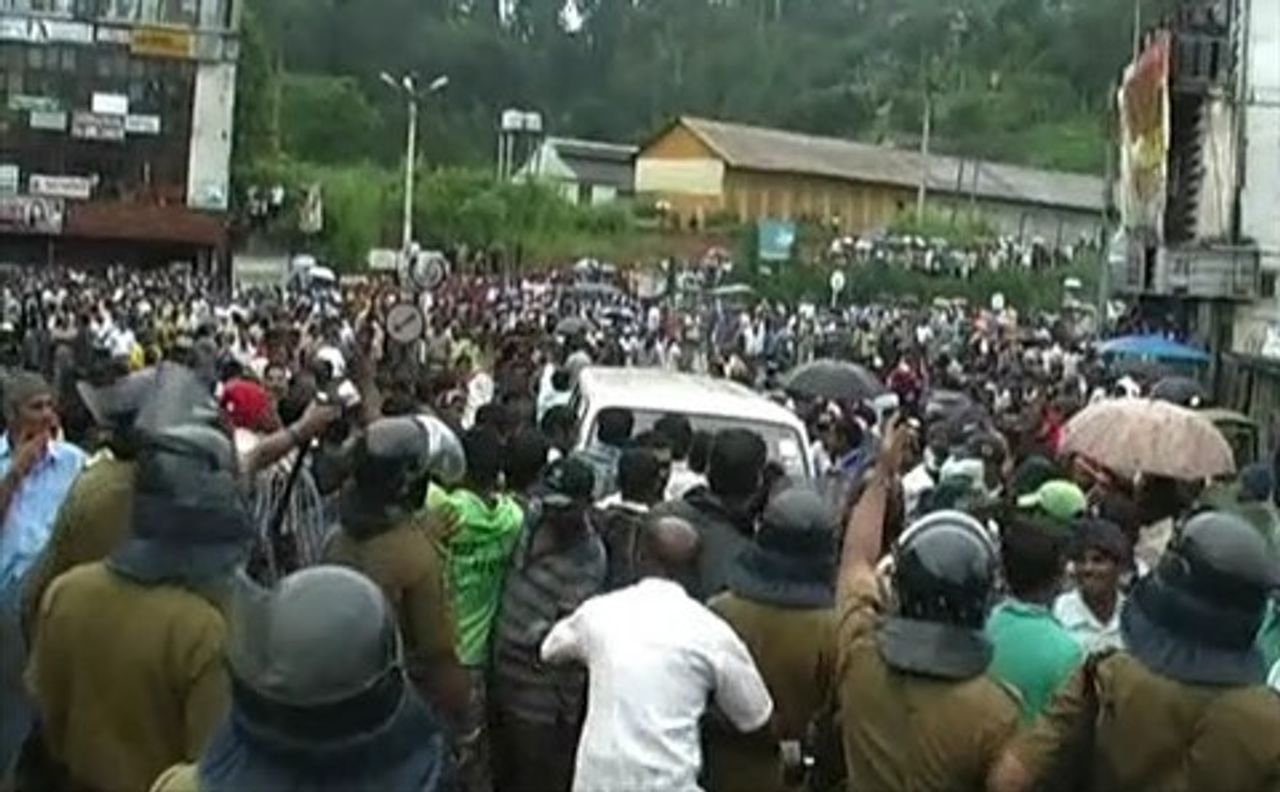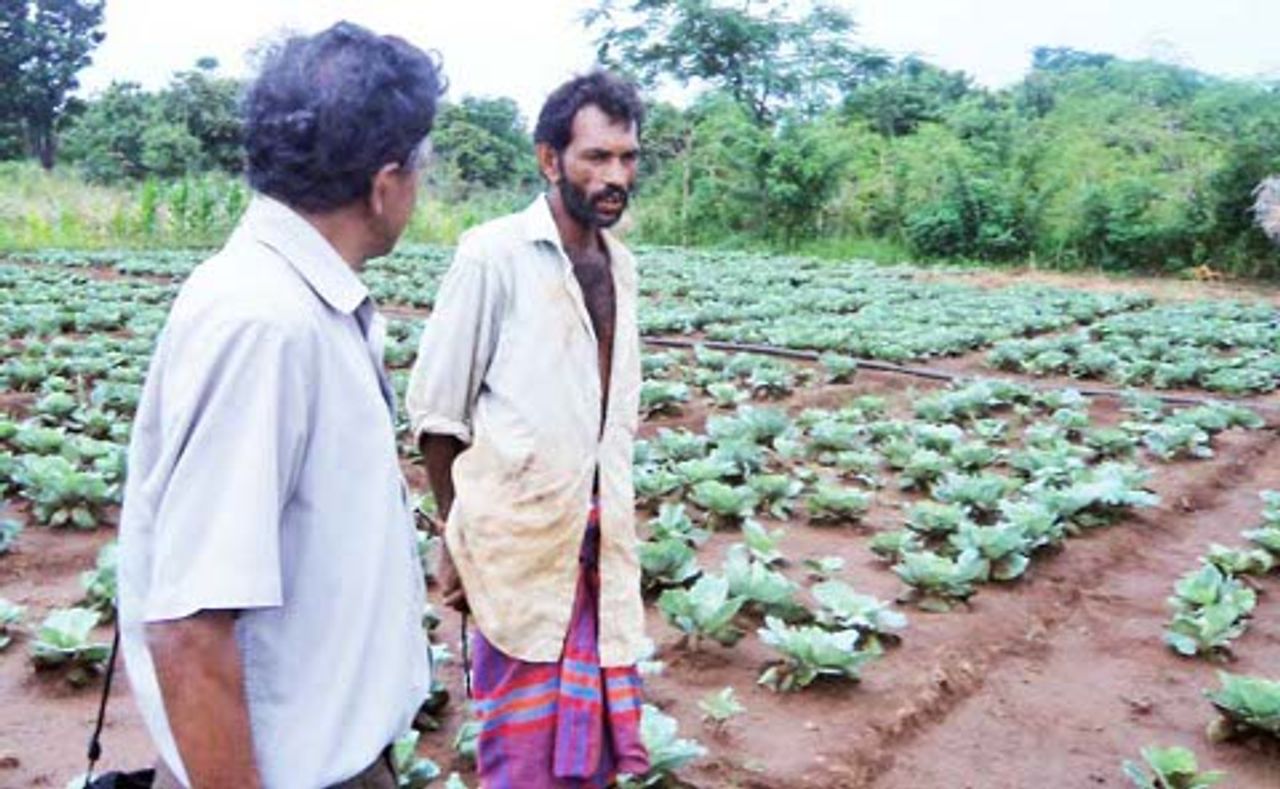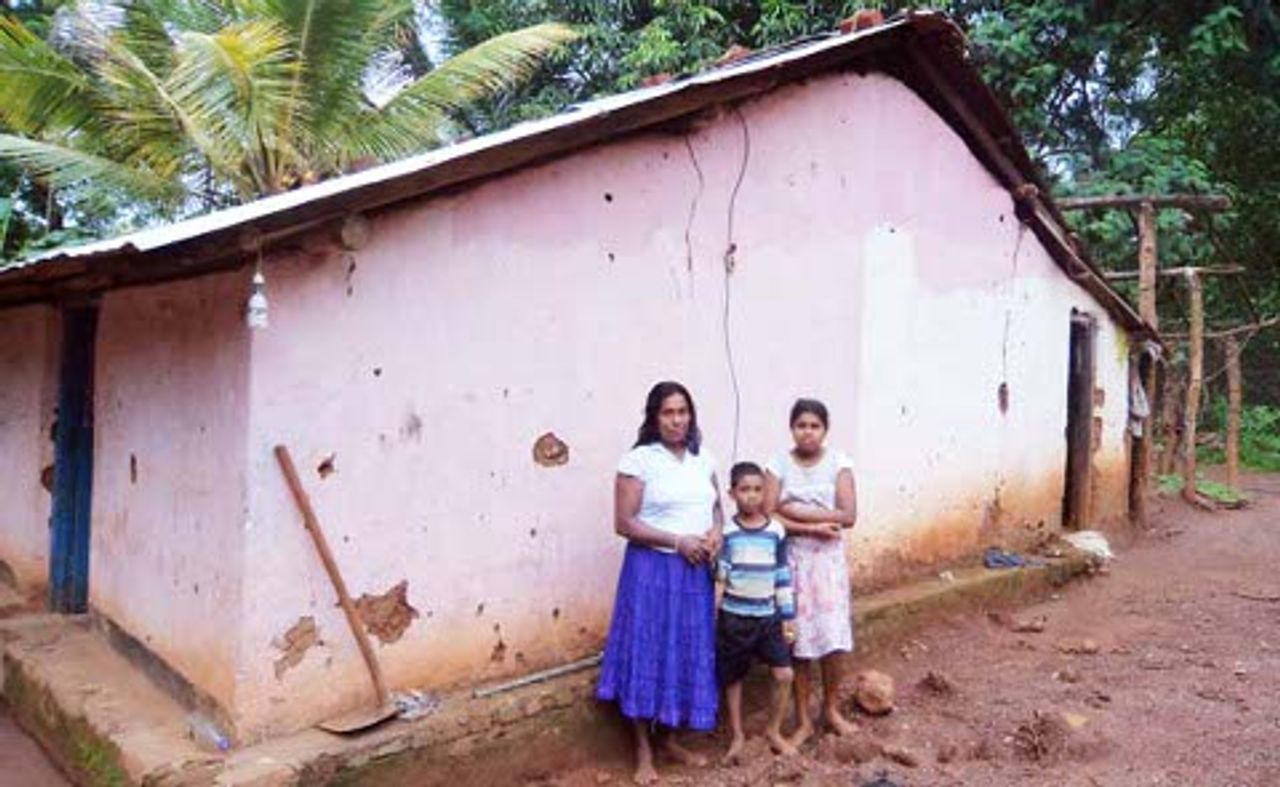Tens of thousands of rural farmers and small traders in almost every region of Sri Lanka protested early last week against a newly introduced government law making it compulsory to use plastic crates to transport vegetables and fruit.
Vegetable supplies to markets and state institutions such as hospitals, the army and the police came to standstill as a result of the widespread protests. Prices soared 300 to 400 percent for several days.
 Police attack protesting farmers in Bandarawela
Police attack protesting farmers in BandarawelaThe protests revealed not just mass discontent over the new law, but broad disenchantment among the rural poor with the government of President Mahinda Rajapakse. The additional transportation costs threaten to compound the already serious economic problems facing farmers.
The trade ministry justified the law with the claim that 5 to 40 percent of vegetable and fruit production goes to waste after harvesting due to poor transport methods, which could be prevented by the use of plastic crates. It arbitrarily introduced the requirement last year but was compelled to shelve it in the face of widespread opposition from farmers and small traders.
The government re-imposed the new system as of December 12. Immediately, 40 lorries transporting vegetable and fruit in sacks were taken into custody by trade ministry authorities and subjected to fines of 2,000 rupees ($US18) per vehicle.
As news of the fines spread, small vendors and transporters took to the streets in their thousands and the angry scenes lasted for three days. The protests took place at main collecting centres for vegetables and fruit such as Dambulla, Tambuththegama, Kandapola, Bandarawela, Norochcholai and Ranna. More than 4,000 farmers, transporters and traders demonstrated and blocked roads around the central Manning Market in the capital Colombo.
Participants shouted slogans such as “To whom the commissions for crates”, reflecting their suspicions that government officials will profiteer from the new laws, and “Mahinda Chinthanya (Mahinda vision) represses farmers”. In Dambulla, people angrily tore down huge billboards displaying Rajapakse’s portrait.
Violent clashes erupted in Dambulla and Bandarawela when the police tried to disperse the crowds. Police attacked protesters with tear gas and people in return pelted stones at the police.
Some 83 protesters, including 28 from Dambulla and 38 from Bandarawela, were arrested on December 13-14. They were later released on bail due to police fears of more protests. Twenty-four people were injured so severely they had to be hospitalised.
The government immediately deployed hundreds of troops to control Dambulla and Bandarawela, signalling that it will not hesitate to use the same military methods advanced during the war against the Liberation Tigers of Tamil Eelam (LTTE) to suppress social unrest.
Speaking at the parliament on December 12, trade minister Johnston Fernando hysterically attacked protesters as a handful of thugs and insisted that the new law would not be withdrawn again. On December 14, however, Rajapakse called a meeting with representatives of farmers and traders to deflect the anger. He announced a so-called one-month grace period while warning that the new system would inevitably be introduced.
 Wewala peasant in discussion with WSWS reporter
Wewala peasant in discussion with WSWS reporterWSWS reporters visited Dambulla and Bandarawela to speak with farmers, traders and truck drivers about how the law would place an intolerable extra burden on them.
The plastic crates cost two to three times as much as sacks to transport produce. One sack, for example, holds 50 kilograms of vegetables but at least three plastic crates are now required.
A small trader from Galle, who transports vegetables from Bandarawela, said: “I have to spend about 1,600 rupees when I use gunnies [sacks]. If I used plastic crates, I have to spend more than 15,000 rupees per trip. How can I continue my business in such a situation? If the government imposes this law, traders like me will be thrown on the streets.”
A farmer from Bandarawela said: “We have to make a big struggle to bring vegetables to the road. We have to come through small paths in the fields. It is very difficult as the area is hilly. However, when we take vegetables in gunnies, we can change the bag from one shoulder to the other. But if you use crates, you can’t do that.”
Another farmer explained that on top of the cost of the crates, they also had to pay to bring the empty ones back. He said: “If we add the cost to the produce, the consumers will have to pay more to buy things. The government says that the law is to restrict wastage of vegetables but you come and see how peasants are destroying vegetables during harvesting season in February and March as they cannot get a good price.”
According to farmers, sometimes the price of tomatoes falls as low as 3 rupees [$US.03 cents] per kilogram and a 50 kilogram bag of cabbage to 50 rupees. Unable to sell at a reasonable price, farmers have destroyed their harvests in frustration or set fire to their fields. During last week’s protests, some farmers dumped large quantities of vegetables in the streets to express their anger.
A farmer at Wewala, 32 kilometres from Dambulla town, commented: “I am a small farmer. I take two or three sacks of vegetables to the market in one trip on a push bike. If this law is imposed, I’ll have to use at least two or three plastic crates to transport vegetables that pack into one sack. I’ll have to use 9 or 10 crates and then hire a vehicle to transport them. They charge 50 rupees to hire a container. Then I have to pay 150 rupees to transport the crates from my garden. Is there any profit remaining for me?”
 Farming family outside their Welwala home
Farming family outside their Welwala homeThe farmers of Wewala make their living by growing vegetables and papaw. They do not have a proper irrigation system and most of them depend on rain or water pumped from canals or wells. The road to Wewala from Dambulla is scarred with pit holes and becomes muddy during heavy rain. There is no adequate bus service.
Most of the village houses have only one or two small bedrooms and a kitchen and are built with cement blocks or bricks. Some are unfinished. There is a small hospital, but it has inadequate medical supplies and only one doctor, who is not available at night as there are no residential quarters for him. When people get ill at night or suffer with a serious condition, they have to be taken to Dambulla or Kandy hospital—some 60 kilometres away.
According to local farmers, they spend around 150,000 to 175,000 rupees per acre (0.4 hectares) to cultivate vegetables. The prices for seeds and chemicals have gone up rapidly in last two or three years. People insisted the new system would further eat into their income.
A farmer at Wewala said: “As there is no stable price it is difficult to get a profit. I cultivate about three acres but it is only enough to maintain our lives. I have two children and they are still at school. So I have to spend money for their education. As I cannot earn enough income from farming, I hire my three-wheeler taxi to earn an extra income.”
Many farmers and traders in Dambulla said that they voted for the government in last elections. One said: “We did so as the government ended the war and we thought that we would get some relief. But now everything has gone up and the government is going to ruin us with the new law. We say the government should now call an election and see what will happen.”
The peasant protests reveal the deep-going problems in rural Sri Lanka. The rural poor are burdened by the lack of land, inadequate irrigation and transport, the inability to get a guaranteed price for produce, indebtedness, lack of access to modern farming techniques and the control over seed, fertiliser and chemicals by agribusiness corporations. The crate system imposed by the Rajapakse government is one more intolerable burden.
The arbitrary manner with which the new transporting method was implemented, and the deployment of police and military against farmers, has shattered the government’s pretensions to be a “friend” of the rural masses. It has provided a fertiliser subsidy not because of sympathy for farmers but to try and stem rising discontent. As Rajapakse implements IMF austerity measures, it will not be long before even this limited concession is scrapped.
The opposition parties, the United National Party and JVP [Janatha Vimukthi Peramuna] have sought to exploit the anger of the rural poor by demanding the withdrawal of the compulsory crate system and calling for further protests. Neither, however, are any more “friends” of the peasant masses than the government. When in power, the UNP implemented major free market restructuring, including slashing agricultural subsidies. The JVP was previously in coalition with Rajapakse and supported its previous measures undermining the conditions of small farmers.
Only a workers’ and peasants’ government can address the problems of the rural poor, who require cheap credit, technical assistance and guaranteed prices for their produce. That necessarily involves the nationalisation of the banks and agribusinesses as part of the reorganisation of society to meet the social needs of the majority, not the profits of the wealthy few. Only the Socialist Equality Party fights for this perspective as part of the struggle for socialism internationally.
